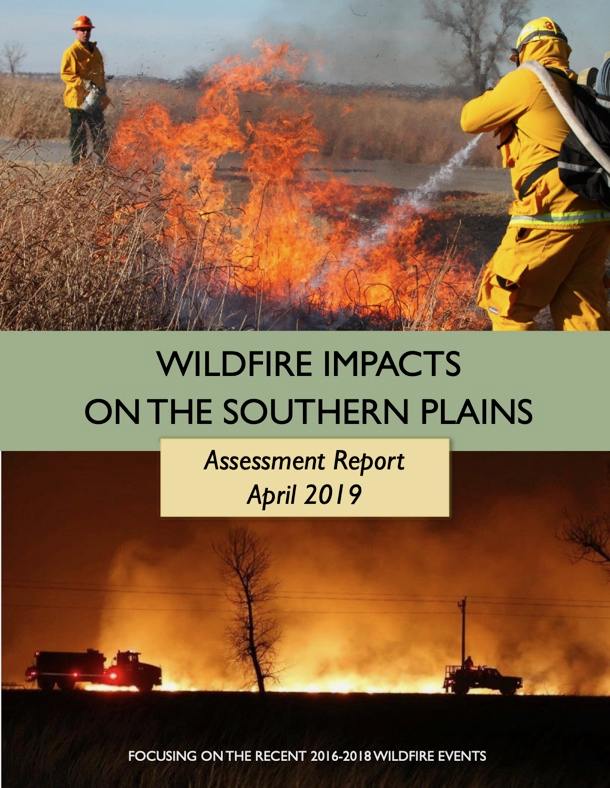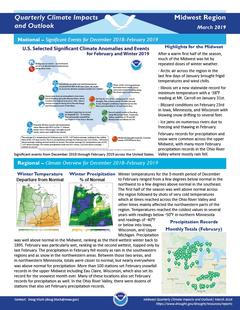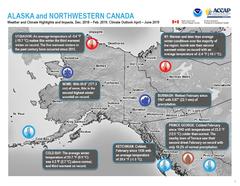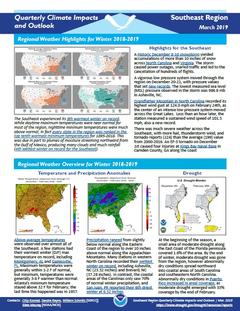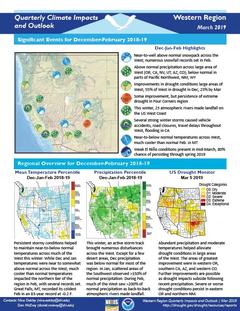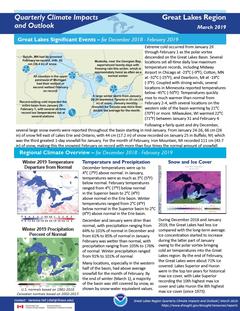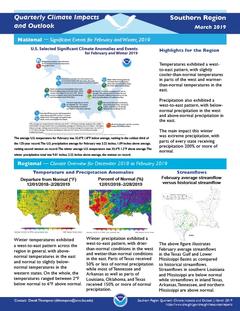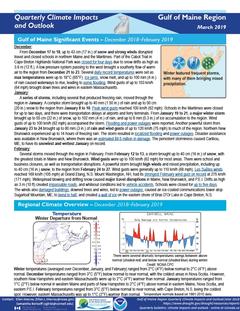Between 2016 and 2018, the U.S. Department of Agriculture (USDA) Southern Plains Climate Hub led a project to assess the impacts of the recent historic 2016 and 2018 wildfires on the Southern Plains.
The 2019 Water Year (starting Oct. 1, 2018) was off to a dry start in California-Nevada, but a wet winter has improved drought conditions. For the first time since December 20, 2011, California is drought free as of mid-March according to the U.S. Drought Monitor with less than 7% of the state remaining abnormally dry (D0). Similarly Nevada is drought free as of the end of March with ~10% of the state remaining abnormally dry (D0).
Quarterly Climate Impacts and Outlook for the Midwest Region for December 2018 – February 2019. Dated March 2019.
Winter temperatures for the 3-month period of December to February ranged from a few degrees below normal in the northwest to a few degrees above normal in the southeast. Precipitation was well above normal in the Midwest, ranking as the third wettest winter back to 1895.
Quarterly Climate Impacts and Outlook for Alaska and Northwestern Canada for December 2018 – February 2019; outlook for April – June 2019. Dated March 2019.
Quarterly Climate Impacts and Outlook for the Southeast Region for December 2018 – February 2019. Dated March 2019.
Quarterly Climate Impacts and Outlook for the Western Region for December 2018 – February 2019. Dated March 2019.
Persistent stormy conditions helped to maintain near-to-below normal temperatures across much of the West this winter. Abundant precipitation and moderate temperatures helped alleviate drought conditions in large areas of the West.
Quarterly Climate Impacts and Outlook for the Great Lakes Region for December 2018 – February 2019. Dated March 2019.
Winter temperatures ranged from 2°C (4°F) below normal in the Superior basin to 2°C (4°F) above normal in the Erie basin. Winter precipitation ranged from 91% to 101% of normal.
Quarterly Climate Impacts and Outlook for the Northeast Region for December 2018 – February 2019. Dated March 2019.
Winter averaged out to be 0.9°F above normal, with ten of the Northeast's twelve states being warmer than normal. The Northeast received 128% of normal precipitation during winter. All states were wetter than normal, with two ranking this winter among their ten wettest.
Quarterly Climate Impacts and Outlook for the Southern Region for December 2018 – February 2019. Dated March 2019.
Winter temperatures exhibited a west-to-east pattern across the region in general, with above normal temperatures in the east and normal to slightly below normal temperatures in the western states. Winter precipitation also exhibited a west-to-east pattern, with drier than normal conditions in the west and wetter than normal conditions in the east.
Quarterly Climate Impacts and Outlook for the Gulf of Maine Region for December 2018 – February 2019. Dated March 2019.
Winter temperatures (averaged over December, January, and February) ranged from 2°C (4°F) below normal to 2°C (4°F) above normal. Winter precipitation (accumulated from December–February) generally ranged from 75% to 150% of normal.


